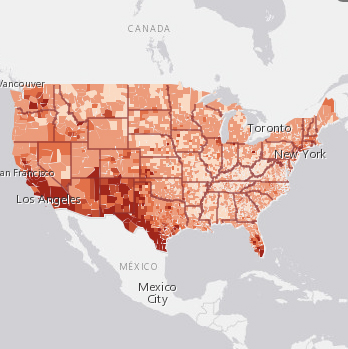Story Maps Used to Customize Consumer-Oriented Legal Service Solutions
 The Self-Represented Litigation Network (SRLN) recently released America’s Civil Courts: Whom Do We Serve?—a geospatial story map designed to help the tens of millions of Americans attempting to navigate the civil legal system without a lawyer. According to Richard Zorza, SRLN Coordinator Emeritus, this online tool “is an important step in ensuring that strategic planning is informed by underlying indicia of need.”
The Self-Represented Litigation Network (SRLN) recently released America’s Civil Courts: Whom Do We Serve?—a geospatial story map designed to help the tens of millions of Americans attempting to navigate the civil legal system without a lawyer. According to Richard Zorza, SRLN Coordinator Emeritus, this online tool “is an important step in ensuring that strategic planning is informed by underlying indicia of need.”
Grounded in the belief that to design consumer-oriented legal services one must first possess a deep and accurate understanding of people’s needs, this online tool endeavors to increase access to justice by highlighting the unique resources, needs, and service networks of individual communities. By using population datasets, the story map creates opportunities to collaborate and design legal services. For example:
- Housing rental rates can inform the prioritization of resources and projects.
- Population density can inform systems of service delivery.
- Local constituency of adults by age group can inform the priority of resources, education, and collaborations.
- Density of children and young adults in a community can guide service provider decisions pertaining to resource allocation and community partnerships.
- Racial/ethnic composition can help all stakeholders deliver culturally appropriate services.
- Availability of mobile broadband and high-speed internet can facilitate stakeholder efforts that are responsive to technology needs.
America’s Civil Courts: Whom Do We Serve? was developed in response to the Justice for All project’s call on access to justice stakeholders to develop strategic plans that support efforts toward 100% access to effective assistance for essential civil legal needs.


